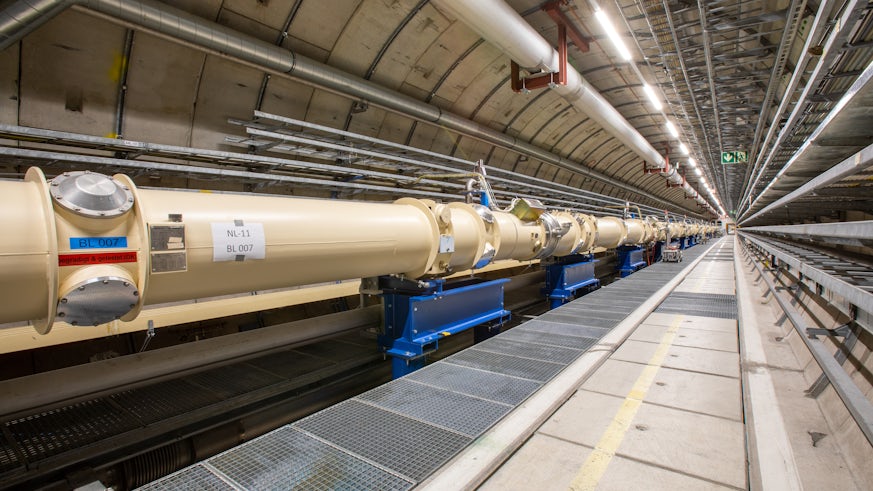New hope in search for dark matter as most sensitive instrument of its kind begins first science run
22 June 2023

The search for extremely light particles which are thought to be the building blocks of dark matter is underway.
An international team of scientists, led by Deutsches Elektronen-Synchrotron (DESY) and drawing on expertise from Cardiff University, have started the Any Light Particle Search (ALPS II) experiment.
ALPS II or the ‘light shining through a wall’ experiment stretches a total length of 250 metres and aims to identify a new elementary particle.
If found to exist, the team says the particle would provide solutions to a whole series of problems currently puzzling physicists, including the composition of dark matter.
According to current calculations, dark matter should be around five times as abundant as normal matter, which consists of the atoms that make up stars, planets, human beings and every other visible object in the Universe.
Professor Hartmut Grote, from the Gravity Exploration Institute at Cardiff Univeristy’s School of Physics and Astronomy and part of the ALPS II research team, said: “We have contributed our expertise and work to the delicate optical setup that makes cutting-edge experiments like ALPS II possible.
“The ALPS II experiment uses a lot of the optical techniques that are also used for laser-interferometric gravitational wave detectors, which are our particular field of expertise. Using such techniques for yet unsolved puzzles in fundamental physics is part of our ‘Quantum-Enhanced Interferometry’ consortium in the UK, which has supported our contribution to ALPS II.”
Using twenty-four recycled superconducting magnets from the Hadron-Electron Ring Accelerator (HERA), an intense laser beam, precision wave measurement techniques and highly sensitive detectors, the researchers hope to produce axions or axion-like particles.
Such particles are thought to react only extremely weakly with known kinds of matter, which means they cannot be detected in experiments using accelerators.
ALPS aims to overcome this by creating a strong magnetic field in which particles of light can be transformed into axion-like particles before reverting into light again.
Professor Beate Heinemann, Director of Particle Physics at DESY, said: “The idea for an experiment like ALPS has been around for over 30 years.
“By using components and the infrastructure of the former HERA accelerator, together with state-of-the-art technologies, we are now able to realise ALPS II in an international collaboration for the first time.”
The ALPS experiment was originally proposed by DESY theoretician Dr Andreas Ringwald, who also underpinned the theoretical motivation for the experiment with his calculations on extending the Standard Model.
Dr Ringwald added: “Experimental and theoretical physicists worked together very closely for ALPS. The result is an experiment which has a unique potential to discover axions, which we might eventually even use to search for high-frequency gravitational waves.”
The ALPS II collaboration brings together expertise from seven international research institutions: DESY, the Max Planck Institute for Gravitational Physics, the Institute for Gravitational Physics at Leibniz University in Hanover, Cardiff University, the University of Florida, the Johannes Gutenberg University in Mainz, the University of Hamburg and the University of Southern Denmark.
Share this story
It is a friendly, approachable School with a strong commitment to teaching excellence and world class research in physics and astronomy.




